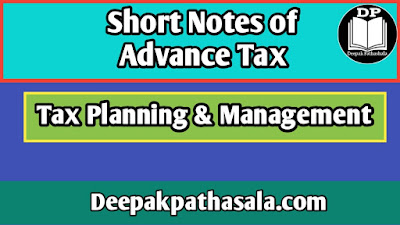Return of Income, Assessment Procedure, Interest and fees, Survey, Search and Seizure, Refund, demand and recovery
- Return of Income: This refers to the filing of an income tax return by a taxpayer with the tax authority. The return of income includes details of income earned by the taxpayer during a financial year, deductions claimed, and taxes paid.
- Assessment Procedure: This is the process undertaken by the tax authority to examine the return of income filed by a taxpayer to determine the amount of tax payable or refundable. The assessment procedure involves scrutiny of the return, verification of the income and deductions claimed, and calculation of the tax liability.
- Interest and Fees: Interest and fees are charges levied by the tax authority on a taxpayer for delayed payment of taxes or non-compliance with tax laws. Interest is charged on the amount of tax payable from the due date of payment until the actual payment is made. Fees are charged for non-compliance with various tax provisions such as non-filing of a return of income or non-maintenance of proper records.
- Survey: A survey is a method used by the tax authority to gather information about the income and assets of a taxpayer. A survey can be conducted either by visiting the premises of the taxpayer or by requiring the taxpayer to furnish information and documents.
- Search and Seizure: Search and seizure is a power granted to the tax authority to search the premises of a taxpayer and seize any books of accounts, documents or assets that are suspected to
be related to undisclosed income or assets. This power is exercised only on the basis of credible information and with the prior approval of senior tax officials. - Refund: Refund refers to the amount of tax paid by a taxpayer in excess of the actual tax liability. The tax authority is required to refund this amount to the taxpayer within a stipulated period.
- Demand and Recovery: Demand and recovery refer to the process of collecting tax dues from a taxpayer who has failed to pay the tax liability. The tax authority can issue a demand notice to the taxpayer and initiate recovery proceedings through various means such as attachment of assets, garnishment of wages, and auction of property.
Summary of the topics in table form:
| Topic | Description |
|---|
| Return of Income | Filing of income tax return by taxpayer |
| Assessment Procedure | Examination of return to determine tax liability |
| Interest and Fees | Charges for delayed payment or non-compliance |
| Survey | Method to gather information about taxpayer's income and assets |
| Search and Seizure | Power to search premises and seize assets suspected to be related to undisclosed income |
| Refund | Amount of tax paid in excess of tax liability that is refunded to taxpayer |
| Demand and Recovery | Process of collecting tax dues from non-compliant taxpayers
|
Conclusion
In conclusion, the topics covered are all related to the process of income tax assessment, collection, and compliance. Taxpayers need to file accurate returns, pay taxes on time, and comply with tax laws to avoid interest, penalties, and enforcement actions by the tax authority.


